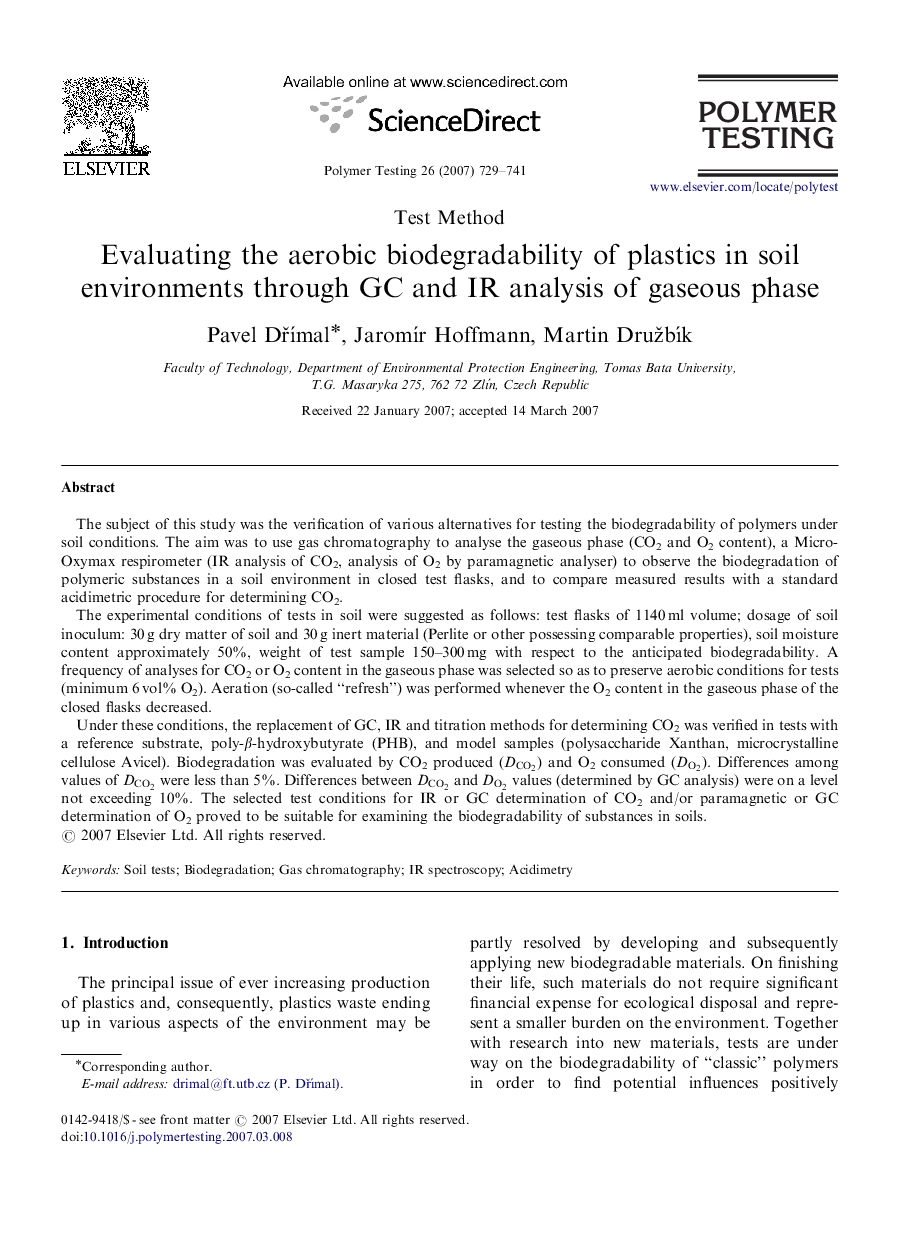| Article ID | Journal | Published Year | Pages | File Type |
|---|---|---|---|---|
| 5207545 | Polymer Testing | 2007 | 13 Pages |
The subject of this study was the verification of various alternatives for testing the biodegradability of polymers under soil conditions. The aim was to use gas chromatography to analyse the gaseous phase (CO2 and O2 content), a Micro-Oxymax respirometer (IR analysis of CO2, analysis of O2 by paramagnetic analyser) to observe the biodegradation of polymeric substances in a soil environment in closed test flasks, and to compare measured results with a standard acidimetric procedure for determining CO2.The experimental conditions of tests in soil were suggested as follows: test flasks of 1140 ml volume; dosage of soil inoculum: 30 g dry matter of soil and 30 g inert material (Perlite or other possessing comparable properties), soil moisture content approximately 50%, weight of test sample 150-300 mg with respect to the anticipated biodegradability. A frequency of analyses for CO2 or O2 content in the gaseous phase was selected so as to preserve aerobic conditions for tests (minimum 6 vol% O2). Aeration (so-called “refresh”) was performed whenever the O2 content in the gaseous phase of the closed flasks decreased.Under these conditions, the replacement of GC, IR and titration methods for determining CO2 was verified in tests with a reference substrate, poly-β-hydroxybutyrate (PHB), and model samples (polysaccharide Xanthan, microcrystalline cellulose Avicel). Biodegradation was evaluated by CO2 produced (DCO2) and O2 consumed (DO2). Differences among values of DCO2 were less than 5%. Differences between DCO2 and DO2 values (determined by GC analysis) were on a level not exceeding 10%. The selected test conditions for IR or GC determination of CO2 and/or paramagnetic or GC determination of O2 proved to be suitable for examining the biodegradability of substances in soils.
